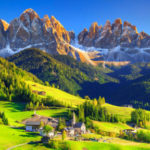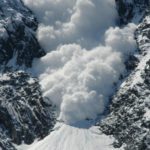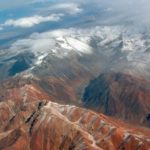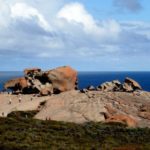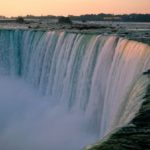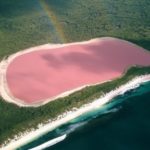Uluru and Kata Tjuta National Park
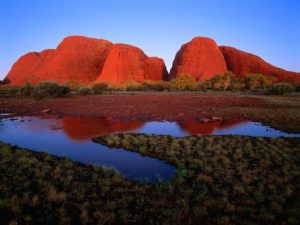 The sights of Australia conquer even the most fastidious alien. Most often, when they are mentioned, the image of the mountain slopes of Uluru and Kata-Tjuta emerges in memory. Mount Urula itself is truly unique. It stands in the middle of a plain with sparse vegetation. The rounded surface of the reddish-colored rock resembles a huge sleeping elephant.
The sights of Australia conquer even the most fastidious alien. Most often, when they are mentioned, the image of the mountain slopes of Uluru and Kata-Tjuta emerges in memory. Mount Urula itself is truly unique. It stands in the middle of a plain with sparse vegetation. The rounded surface of the reddish-colored rock resembles a huge sleeping elephant.
The Uralu rock “lives” on the territory of Australia for almost 680 million years. It is located in the north of the continent near the city of Alice Springs. Its dimensions are quite substantial: length is 3.6 kilometers, width reaches 3 kilometers.
In the distant past, on the site of the rock was Lake Amadius, in the center of which the island was located. The rocks of the island eventually fell off and fell to the bottom of the lake, forming the outlines of an elaborate stone rock. When you look at Uluru from a distance, its surface seems perfectly smooth. But it is necessary to come closer to it, as you can see that the rock is riddled with cracks, irregularities and grooves.
Uluru is located in the desert and is constantly exposed to winds, hurricanes and heavy rains. There are sharp temperature fluctuations: from the exhausting heat in the daytime to the cold, which reduces the teeth, during the nighttime. It is for this reason that cracks are formed on the surface of the “stone giant”.
Uluru is not only a stone. The rock consists of red sandstone, due to which it can change the color range. This can be observed in the morning and evening hours. In the morning the mountain gets a purple hue, and when the sun rises high on the sky, Uluru seems radiantly golden. Such color overflow rocks can be observed throughout the day.
The famous Australian landmark was first seen by Ernest Giles, and at the expiration of the year, Ulurus was conquered by the British William Goss. It was he who gave the rock a new name – Ayers Rock – in honor of the Prime Minister of South Australia. This led to the first influx of tourists. But the local aborigines, who owned the rock, were outraged that they began to use it as a landmark. They claim that Uluru is sacred, and gives strength to a person, if you “communicate” correctly with her. Local aborigines come to the cliff to perform the rite and worship the spirit of the earth.
But the rock continues to be used as a local attraction. A village service is organized not far from the mountain, providing accommodation for visiting guests. You can not only look at the rock Uluru, but also climb. On its surface is a narrow path with a fence that allows you to hold during the ascent. From the top of Uluru a beautiful panorama of the desert area. People come here to admire amazingly beautiful sunrises and sunsets.
In general, Kata-Tjuta is 36 rock formations having the shape of a dome. Each rock has its own size. In Kata-Jute, you can see layers of sedimentary rocks. It is believed that they appeared during the Flood, when the waters rose above the ground and gradually flooded it. Erosion from the Flood of Noah gave the tops of the rocks a rounded shape. The amazing shape of the Kata-Jute domes is explained only by the great events that took place in the world millions of years ago and which are described in the Bible.





